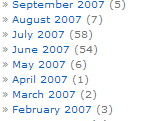We live in a weird time for video games. They’re becoming (and some might say, have already become) mainstream entertainment, and as they grow and mature, and grow, and then grow some more, we start to see some interesting things happen. The barriers to enter the video game market are as low as they’ve ever been, anyone with a computer, programming reference materials, time and passion, can make a game and get it to market, but budgets for so-called “AAA” games are bigger than they’ve ever been, and are getting bigger all the time. Bigger budgets mean that there’s more of a needs to recoup any costs, and doing that means playing it safe. Do what worked in the past, tweak it a little bit, increment the version counter, and then sell it again.
The downside to this is that there is less risk-taking, less variety, and more homogenization. This is good, if you like the current blockbustery flavor-of-the-month game, which I usually don’t. If you’re anything like me, and I’m starting to think that very few of you are, then you want something new once in a while. Something with new characters, new settings, new gameplay ideas, and new concepts.
This is where ‘indie’ games have started to step up their game. Apparently, the only real qualification to be an idie game is that it is developed without backing from a publisher. In the traditional model, a game company would either have an idea, get it to a prototype stage, and search for a publisher to fund the remaining development of the game, or they would be approached by a publisher about making something and then they would get funding to make it. This is weird, since a big-name developer can develop a game and technically it would still be ‘indie’, even though the idea of ‘indie’ seems to be a small team slaving away in a tiny studio somewhere, that’s not always the case.
*I feel like I should note at this point that indie game developers have been around since removable media was invented. You might remember something called ‘shareware‘.
So, what all this means is that, if you want to look for them, there are lots of games being released outside the traditional channels. They won’t necessarily show up in stores or on your favorite video game “news” site. But they’re out there. In fact, there are so many indie games out in the wild now that it’s quickly becoming impossible to even attempt to play them all. And, if you want to develop and release something into the Indie World(tm) you’re going to almost immediately get lost in the shuffle. Unless, of course, you generate buzz.
How do you generate buzz? Word of mouth works, if your game is truly amazing, and you can get a critical mass of people playing about it in the first place, and those people actually tell other people about it, and those people actually download the game and like it, and then continue the cycle (which is much harder than it sounds). Or you can try to get some coverage on one of the millions of game blogs out there. Or you can try to get your game into one of the dozens of ‘indie bundles‘ floating around the internet. Or, etc., etc. All while combating piracy, providing technical support, and maybe trying to work on whatever’s next, all while trying to put food on the table and make sure bills are getting paid.
This means that for every Minecraft or World of Goo or <insert_favorite_indie_game_here> there are dozens of games like Kairo, Goat Simulator, or Dungeon Hearts that just aren’t very good (if you liked them, fine, I’m not here to start an argument), and finding the gems in the firehose of mediocrity is extremely difficult.
So, where does all of this leave us? On one hand, we have formulaic games coming out at a rapid clip with high production values, high cost, and high marketing budgets, and on the other we have games that come out and absolutely insane pace, have production values all over the place, cost a bit less (usually), and have marketing budgets so small that you couldn’t use it to buy a Big Mac. The signal to noise ratio is about the same, but “news” about blockbuster games falls into my lap, and I have to work to find an indie game I might like.
I don’t really know what the solution to all of this is. Maybe there is none. But I do know that the video game landscape is changing faster than the media covering it has been. Weren’t blogs supposed to be faster, and more agile than print media, without the physical limitations? Weren’t they supposed to be able to react and adapt to change, while still covering what’s important?
I’ll tackle that can of worms next time.
